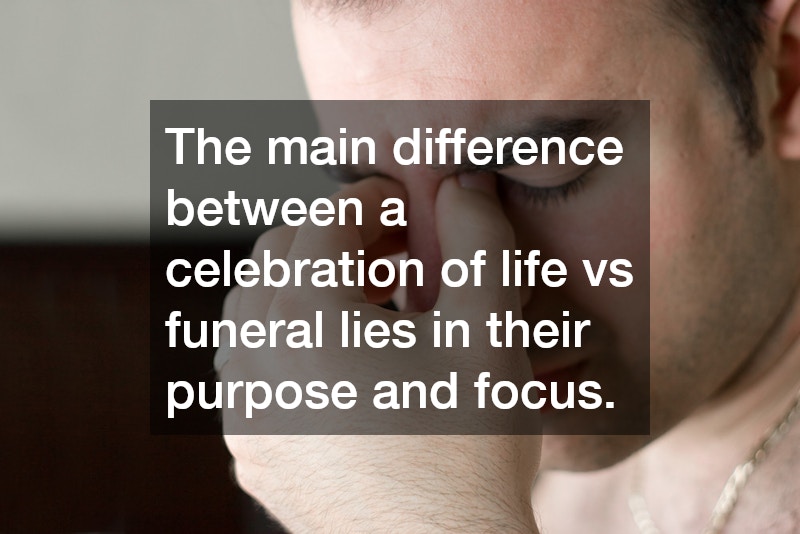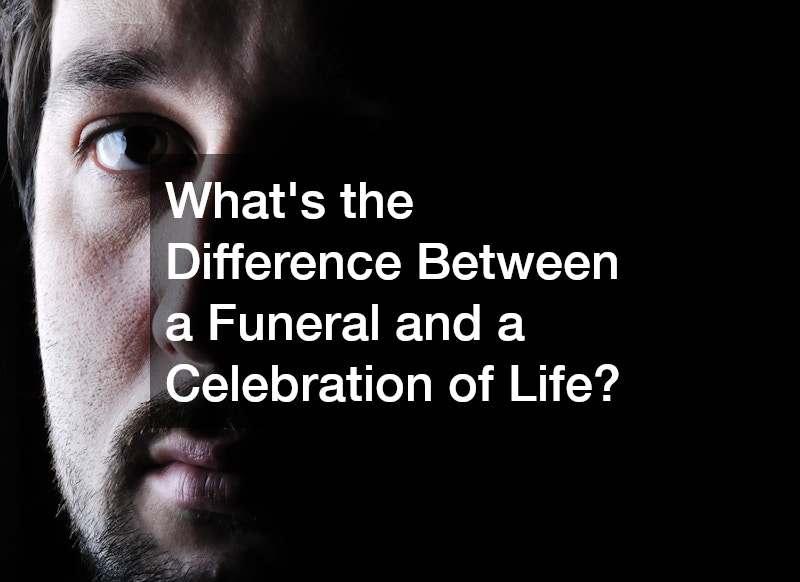When a loved one passes away, planning a service to honor their memory is an essential step in the grieving process. Traditionally, funerals have been the most common way to say goodbye, but in recent years, the concept of a celebration of life has become increasingly popular. While both ceremonies serve to honor the deceased and provide comfort to those left behind, there are distinct differences between the two. Understanding the contrast between a celebration of life vs funeral can help families make an informed decision that best reflects their loved one’s personality and wishes.
In this blog, we’ll explore the key differences between a funeral and a celebration of life, including their purpose, tone, and structure.
1. Purpose and Focus
The main difference between a celebration of life vs funeral lies in their purpose and focus.
A funeral is typically more formal and solemn, focusing on mourning the loss of a loved one. It is often held shortly after the person’s death, with the body or cremated remains present, and is centered around traditional rituals and rites, depending on the family’s religious or cultural beliefs. Funerals are designed to provide closure and allow mourners to say a final goodbye to the deceased in a respectful and dignified manner.
In contrast, a celebration of life is more focused on honoring and celebrating the life of the deceased rather than concentrating solely on the sadness of their passing. The tone is typically more uplifting and positive, reflecting on the memories, accomplishments, and joy that the person brought to the lives of those around them. While sadness is still acknowledged, the emphasis is placed on celebrating the individual’s legacy and the impact they had on their loved ones.
2. Tone and Atmosphere
The tone and atmosphere of a funeral tend to be more somber and reflective. Funerals are often rooted in religious or cultural traditions and typically include formal elements such as prayers, hymns, scripture readings, and eulogies. The environment is usually quiet, respectful, and serious, with attendees expected to dress in dark, conservative clothing as a sign of mourning.
On the other hand, a celebration of life is typically more casual and personalized, with an emphasis on joy and remembrance. The atmosphere can vary depending on the wishes of the family or the deceased, but it is generally more relaxed and uplifting. Guests may be encouraged to share stories, laughter, and memories that reflect the individuality of the person being honored. Music, slideshows, or videos showcasing the person’s life are often part of the celebration, and attendees may dress in brighter or more casual clothing, sometimes even in the deceased’s favorite colors or styles.
3. Timing and Location
Funerals are traditionally held shortly after the person’s death, often within a week, and they are typically organized in formal settings such as a church, funeral home, or cemetery. The presence of the body or cremated remains is usually central to the service, and the event may conclude with a burial or interment.
A celebration of life, on the other hand, is more flexible in terms of timing and location. It can take place days, weeks, or even months after the person’s death, giving the family more time to plan and create a personalized event. These celebrations can be held in a variety of settings, such as a park, a family home, a favorite restaurant, or any location that had special meaning to the deceased. The body or cremated remains are typically not present, though families may choose to display photos, memorabilia, or other symbolic items.
4. Personalization and Creativity
One of the hallmarks of a celebration of life is its emphasis on personalization and creativity. While funerals often follow a more structured format with traditional elements, a celebration of life offers the opportunity for a highly individualized event that reflects the unique personality and interests of the deceased.
For example, families may choose to incorporate activities, hobbies, or themes that the person loved, such as a favorite sport, music, or even a casual gathering with food and drinks. In contrast, a funeral typically adheres to a more formal structure, with rituals and practices that may leave less room for personalization.
5. Religious or Spiritual Elements
Both funerals and celebrations of life can include religious or spiritual elements, but the emphasis differs. A funeral is often rooted in specific religious traditions, with prayers, readings, and hymns that reflect the family’s faith. The ceremony may also follow specific rites, such as a Catholic Mass or a Jewish funeral service, which have long-established customs.
In contrast, a celebration of life may or may not include religious components, depending on the family’s preferences and the deceased’s beliefs. While some celebrations of life may incorporate spiritual readings or prayers, others may focus purely on secular reflections and memories of the individual.
.


